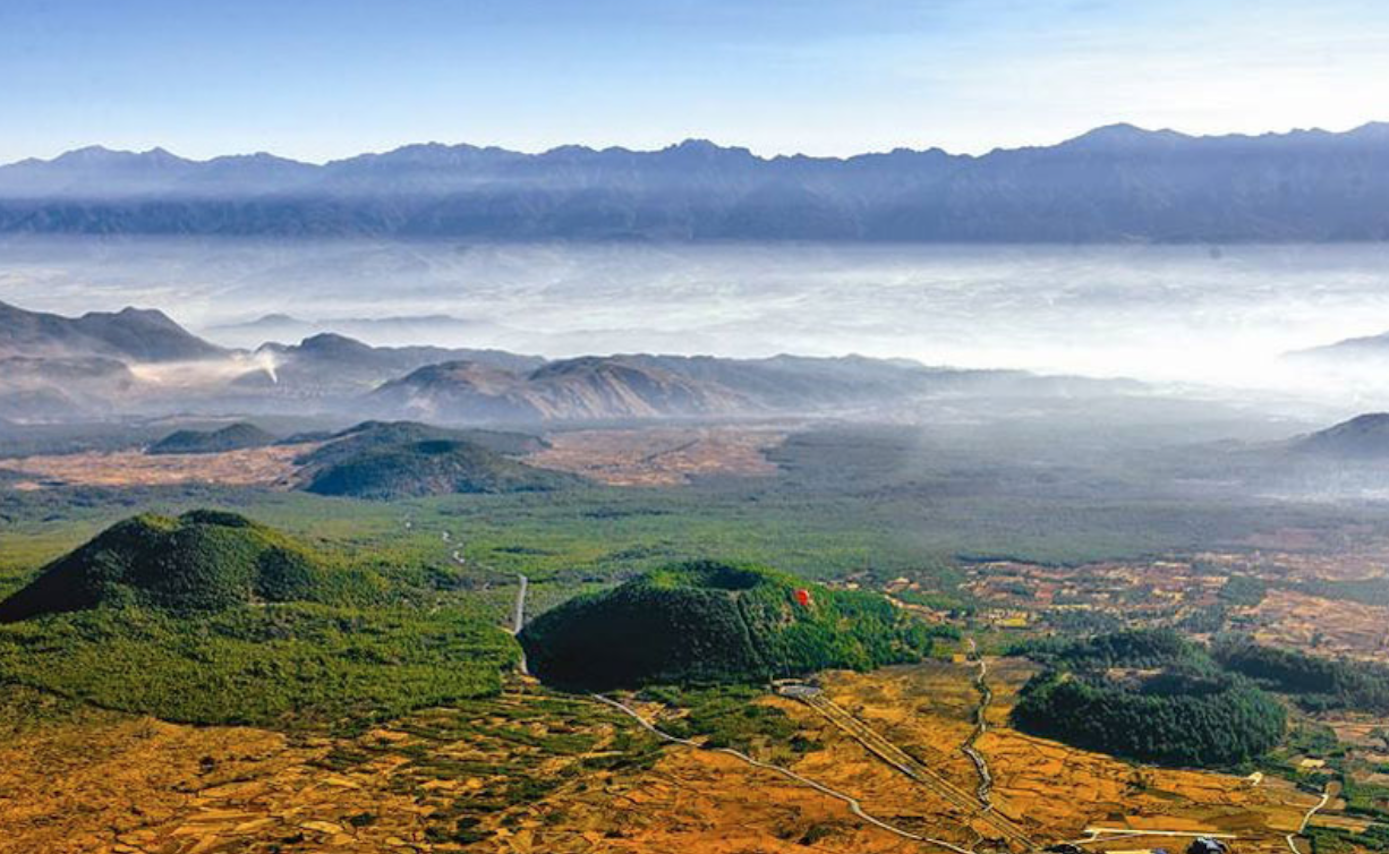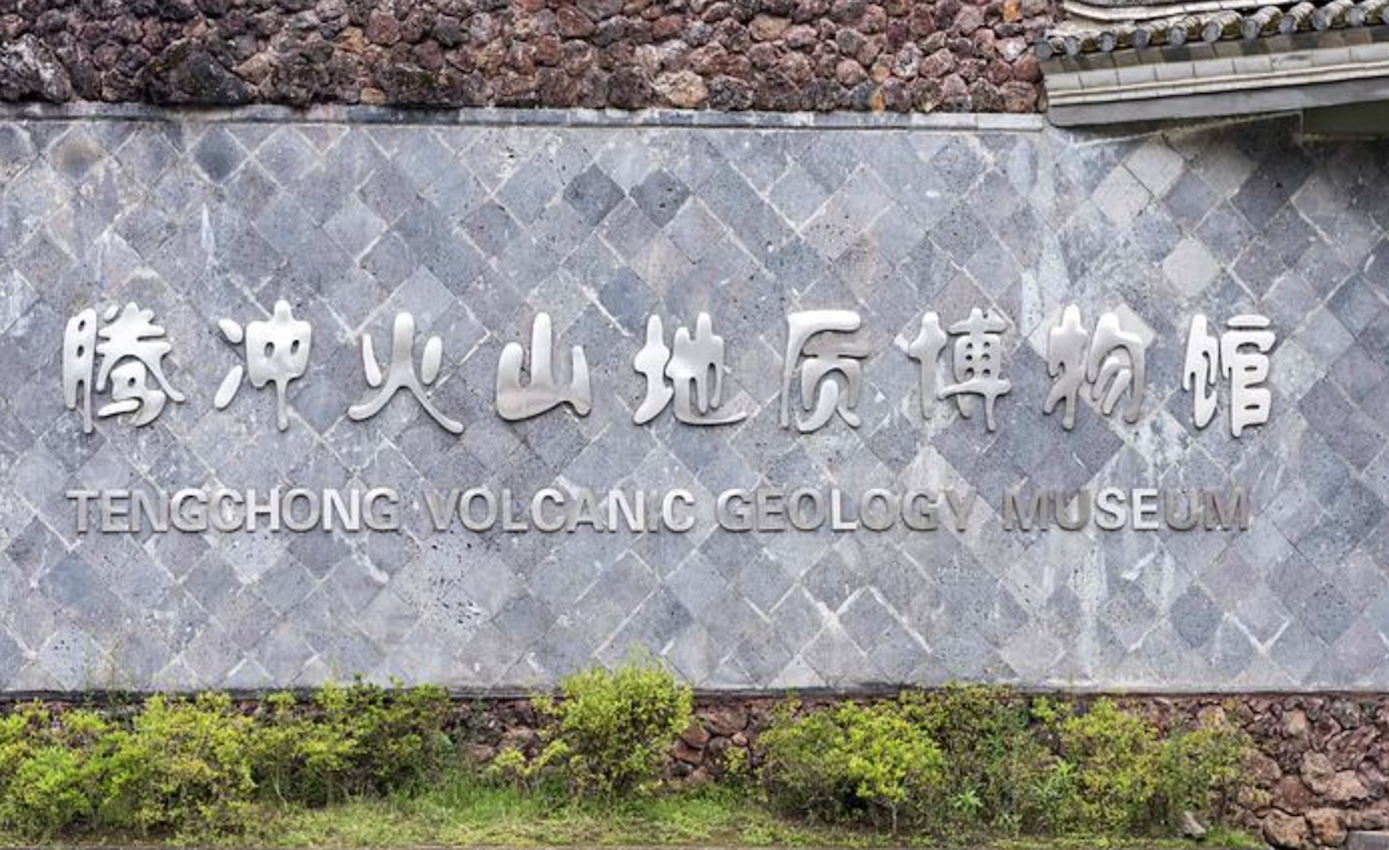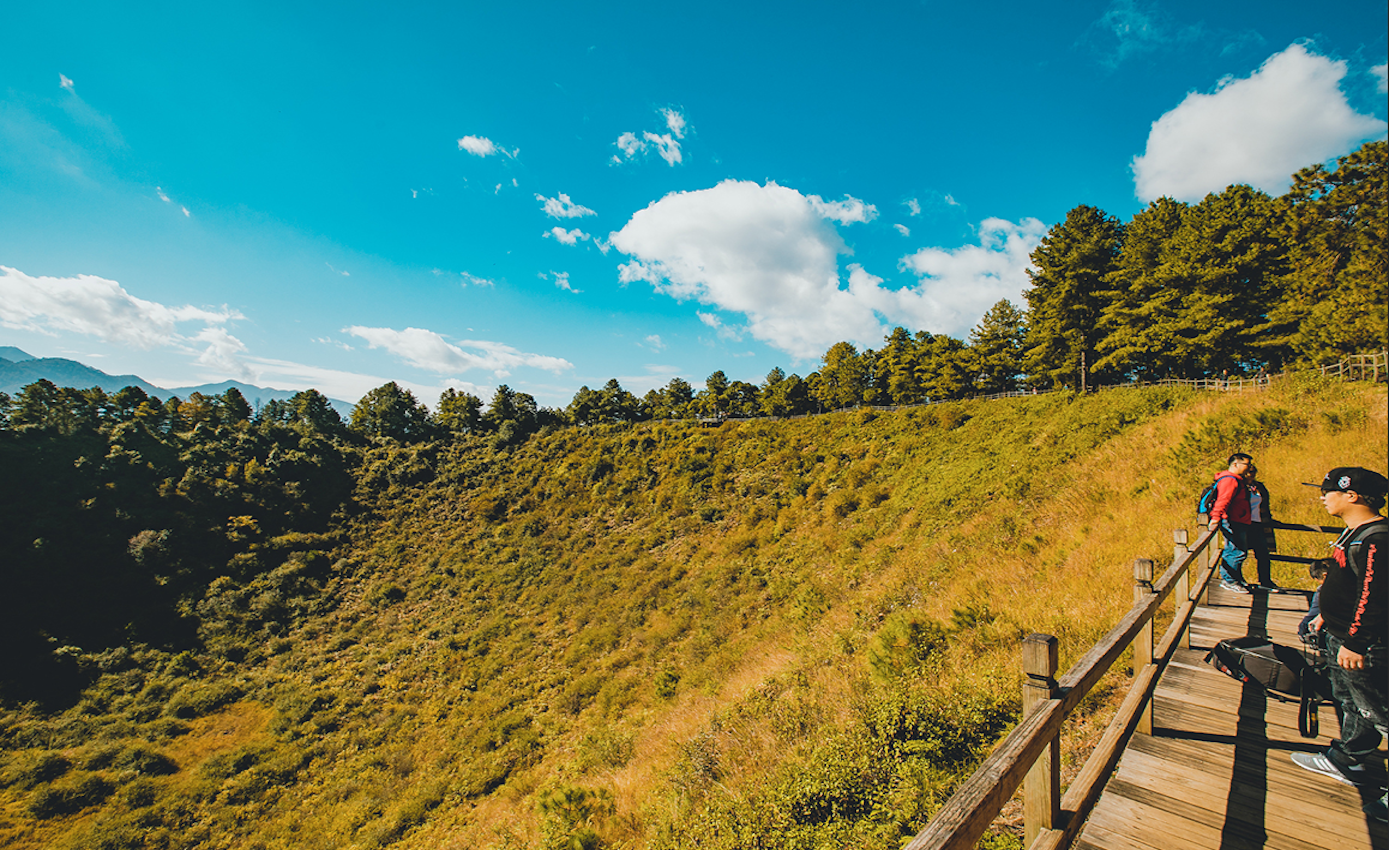
The National Geological Park of Volcanoes
Tengchong County is one of the most famous areas with dense clusters of volcanoes in China. As an old saying goes, "In Tengyue County, nine out of ten mountains are headless." Here the headless mountains refer to the volcanoes. Within an area of over 1, 000 square kilometers in the central and southeastern of Tengchong, there are altogether 97 volcanoes, among which 22 have well-preserved craters. Scientists have confirmed that 68 of those volcanoes are now in their dormant phase. Therefore, the volcanoes in Tengchong constitute the largest and most magnificent museum of dormant volcanoes in China.

The National Geological Park of Volcanoes lies in Mazhan Township 25 kilometers north of the county seat. In the park, there are eight well-preserved volcanoes, of which the main scenic spots are the Dakongshan, Xiaokongshan, and Heikongshan Mountains. The Dayingshan Mountain, the most magnificent volcano, sits only 14 kilometers north of the county seat. Treading the red-brown pumice through the woods to the top, one can imagine the eruption of the volcano. To the northeast of Dayingshan Mountain stands the highest volcanic cone, the Longzong Mountain, with an elevation of 2, 783 meters. Every morning, the mountain is shrouded in mist and clouds, which forms one of the twelve wonders in Tengchong-Morning Clouds in Longzong.

Entering the gate of the park, tourists can first visit a museum, where they can get a general idea of the volcanic scenes in the park by watching videos and pictures, and by reading a literal introduction to volcanoes. Meanwhile, they can also appreciate artistry made out of pumice stones. What is peculiar about volcanic pumice stones is that they will float on water. So, the idiom ''stone will sink into the water'' does not apply here. This is because the volcanic pumice stones look like beehives with many pores and thus are very light.

Coming out of the museum, tourists will see three volcanoes standing in a line from the north to the south. The one in the middle is Dakongshan Mountain, the other two are Xiaokongshan and Heikongshan Mountains. Their craters range in diameter from 300 to 400 meters and have a depth of several dozen meters. These mountains are named Kongshan (hollow mountains) because their craters are very deep as if the mountains were hollowed. If tourists stamp on the mountains, they can hear echoes made by their steps and feel as if the ground were shaking under their feet.

Climbing up 598 A-shaped steps, tourists can come to the top of Dakongshan Mountain, a unique spot in the park. Dakongshan Mountain is 2, 050 meters above sea level, with a relative elevation of 150 meters. The crater is about 400 meters in diameter and 50 meters in depth. The top of the mountain is covered with green grass and trees, and wildflowers of various colors. Looking afar, tourists can see a great many volcanoes around and enjoy the splendid surrounding landscape.

Near Dakongshan, Xiaokongshan, and Heikongshan Mountains there are two volcanic lakes closely connected with each other, so they are called “Sister Lakes" by local people. The lakes are very deep and the scenery around the lakes is picturesque--green pine trees and red camellia flowers reflected in the blue water. The camellia here is called red-flower camellia oleifera, which is confirmed to be the ancestor of Yunnan camellia. The red-flower camellia oleifera is well-known not only for its beautiful flowers but also for its fruit. The oil extracted from the fruit is of high curative and nutritious value, thus gaining the fame of“Green Oil Reservoir".
Up to now columnar joints have been found only in three places in China: Mount Fangshan in Nanjing, Peak Jingding in the Ermei Mountian, and Tengchong. But the edges of the columnar joints at Mount Fangshan have been eroded and those at Peak Jingding have irregular shapes. The “holy columns” in Tengchong, with an area of 1.5 square kilometers, is the largest and best-preserved clusters of columnar joints in China.
Photo Resource: Internet
If there's any copyright issue involved, please contact us to delete.



